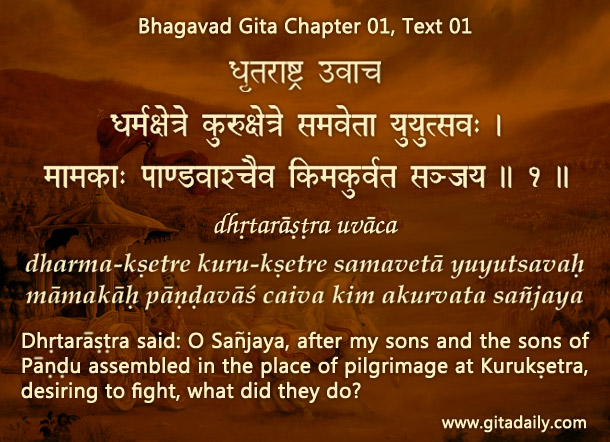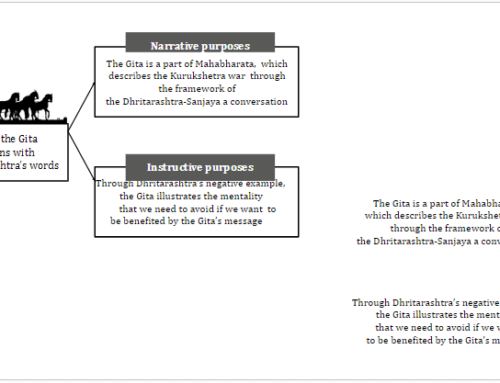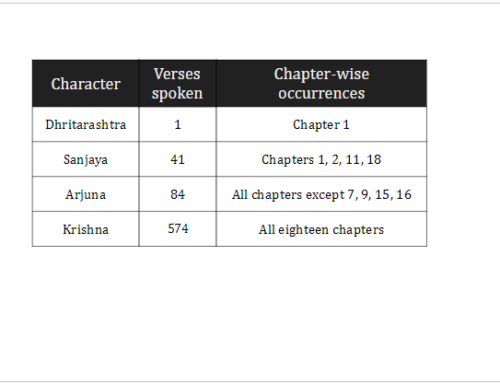The Bhagavad-gita begins and ends with references to places. In its first verse, Dhritarashtra asks his assistant Sanjaya about the events that transpired at the sacred place known as Kurukshetra. Implicit is an anxious enquiry about his sons’ fate.
And its last verse (18.78) begins with a place-describer yatra meaning “where.” Sanjaya declares, “Where there is the supreme mystic Krishna and the archer Arjuna, there will be victory.” Herein is a prophetic answer to Dhritarashtra’s question – his sons are doomed because they have chosen to fight against Krishna and his devotees, who are destined to win. And this prophecy points to the Gita’s universal revelation: When we unite in love with Krishna, victory will manifest.
Let’s see how the Gita moves from its setting to this universal message. Its first verse might sound like a prelude to a spatial martial description. But after it outlines the setting in its first chapter, the Gita features very few references to the place or even to the war itself. Instead, it centers on the broad human-interest subjects of identity, duty and destiny. And its conclusion reveals the universal spiritual success formula: the loving harmony of humanity with divinity.
The same inclusive scope is evident in its starting and ending symbolism. The Gita’s first chapter ends (01.46) with Arjuna disheartened casting aside his bow. In sweet contrast, its last chapter ends with Arjuna determined, bow raised aloft. Arjuna’s bow represents our determination. We too may become disheartened on confronting life’s perplexities and adversities. Nonetheless, we can become determined by hearing the Gita, realizing Krishna’s unfailing love for us, and resolving to serve him lovingly.
The Gita’s concluding verse encapsulates this empowering vision: working in harmony with the divine restores our morale and paves the way to success.
To know more about this verse, please click on the image
Explanation of article:
Podcast:




Very much inspiring words…..Thanks Prabhuji….
geeta’s teachings brings eternal happiness to its followers